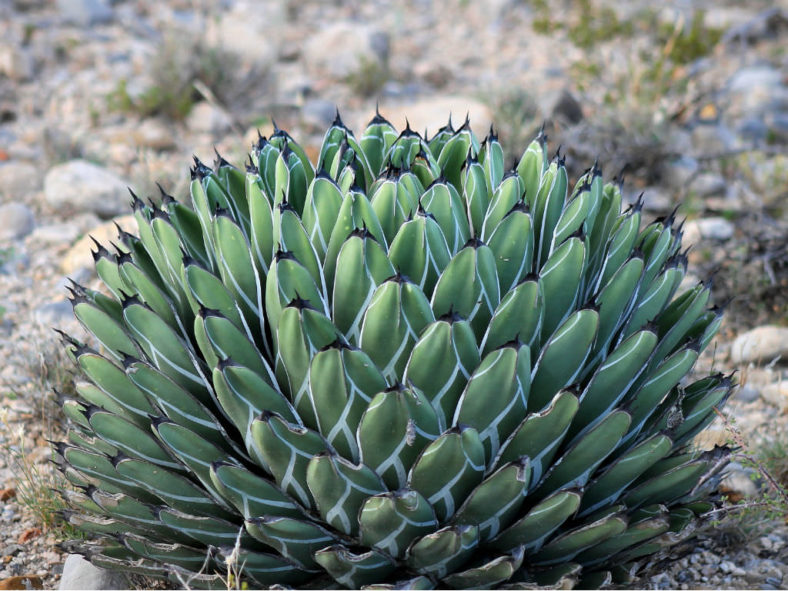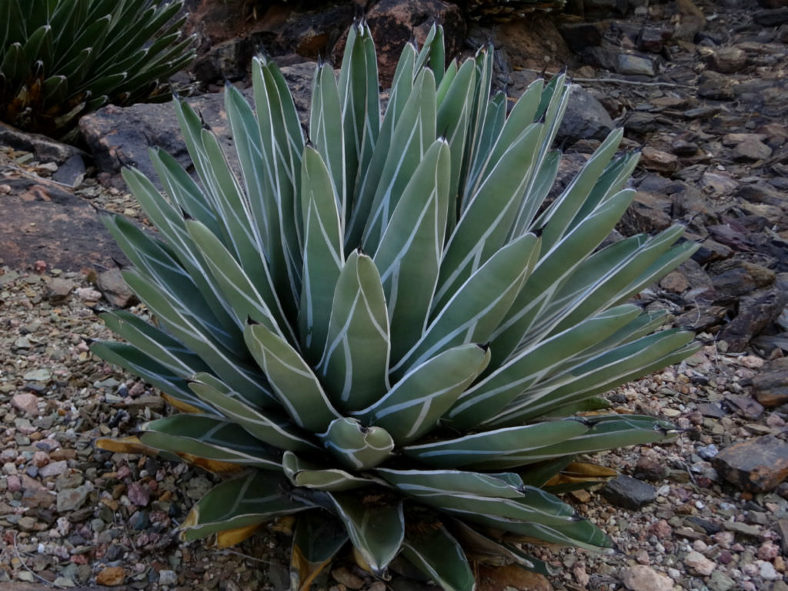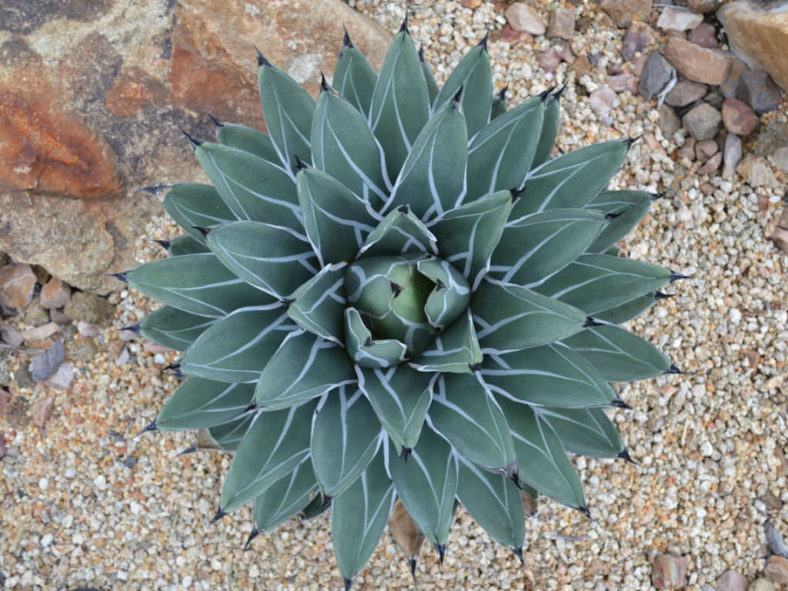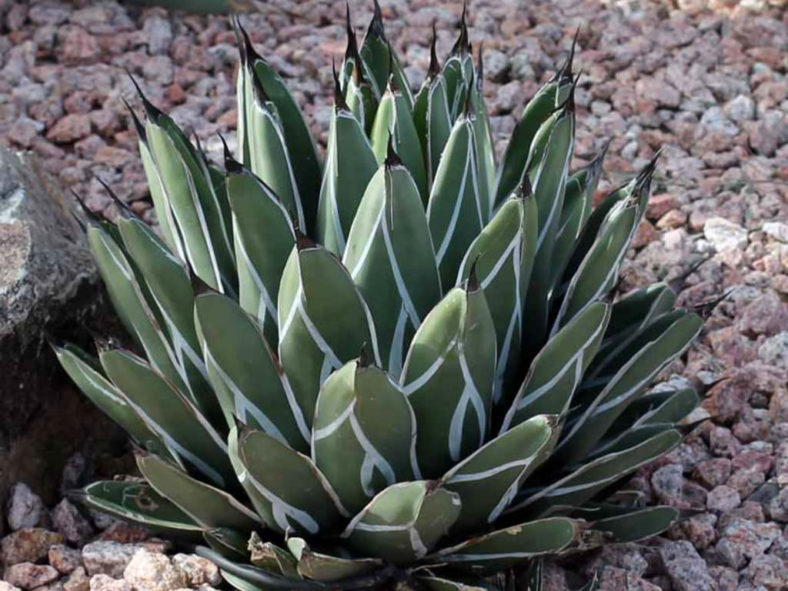Scientific Name
Agave nickelsiae Rol.-Goss.
Common Name(s)
King of the Agaves, King Agave, King Ferdinand's Agave, Pinguino
Synonym(s)
Agave ferdinandi-regis, Agave victoriae-reginae var. laxior, Agave victoriae-reginae f. nickelsiae
Scientific Classification
Family: Asparagaceae
Subfamily: Agavoideae
Genus: Agave
Description
Agave nickelsiae, formerly known as Agave ferdinandi-regis, is a stunning, slow-growing succulent that forms an open rosette of stout, triangular, blue-green leaves with longitudinal, narrow, white bud imprints. The rosette can grow up to 18 inches (45 cm) in diameter. The margins of the leaves are spineless, dark reddish-brown, and terminate at the blunt leaf tip in a stout spine of the same color.
The inflorescence is spike-shaped and can reach up to 13 feet (4 m) in height. It contains many paired flowers of various colors, often with shades of purple-red.
There is a lot of confusion regarding the naming of this plant. It was first named Agave nickelsiae in 1895 but was later renamed Agave ferdinandi-regis by Alwin Berger in 1915. Some authors, such as Howard Scott Gentry, believed it to be just a form of Agave victoriae-reginae, not even deserving the rank of a subspecies or variety. But recently, a group of Mexican botanists has observed that there are significant floral differences between the plants, and they have concluded that Agave nickelsiae should be recognized as a separate species.

Hardiness
USDA hardiness zones 7a to 11b: from 0 °F (−17.8 °C) to 50 °F (+10 °C).
How to Grow and Care
Agaves are not difficult plants to grow. They are slow-growing and dramatic and will even thrive on a bit of neglect. If you are the type of person who likes to fuss with houseplants and water a lot, Agave is probably not the plant for you. If, however, you are the type of person who likes to set it and forget it, and you have a sunny window, Agave might be the way to go. Be aware that some large varieties will eventually outgrow your room (unless you have a large greenhouse), and Agave can be aggressive. They have irritating sap and sometimes very sharp thorns that can cause injuries to small children and even pets.
In general, Agaves do not need to be repotted every year. Most species commonly found in cultivation grow slowly and take long to outgrow their pot. It is also best to handle your plants as little as possible since they do not like to be disturbed. When repot, refresh the spent soil with a new potting mix and make sure the plant is firmly anchored in its pot. However, be careful not to pot the Agave too deep, as that will encourage stem rot during the growing season.
See more at How to Grow and Care for Agave.
Origin
Agave nickelsiae is native to the mountains northeast of Saltillo in north-western Mexico.
Links
- Back to genus Agave
- Succupedia: Browse succulents by Scientific Name, Common Name, Genus, Family, USDA Hardiness Zone, Origin, or cacti by Genus
Photo Gallery
Click on a photo to see a larger version.


